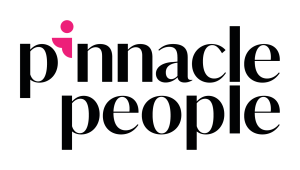We all know that the job market is flooded these days and you need to make a good impression fast – so what is the most efficient way to convey details about yourself to someone who hasn’t met you yet?
There are 3 core components to preparing a great resume.
-
Professional -
Concise -
Relevant
1. Be Professional
A Resume (also known as CV or Curriculum Vitae) is a professional document and should be well presented.
-
Pay attention to spelling and grammar (see below for notes on past tenses). -
Choose a simple, easy to read font and ensure the font and sizing are consistent throughout the document. -
Use professional language and either past progressive or past simple tense. This means – describe the tasks you performed and do not talk emotively (you can express feelings and opinions in a cover letter or an interview, where appropriate, but a resume should be a statement of facts). Also, avoid speaking in the third person. For example:
Instead of: I was happy to be responsible for preparing coffee for customers.
Use: Responsible for preparing coffee for customers (Past Progressive)
Or: Prepared coffees for customers (Past simple)
Past simple is best for tasks or achievements that only occurred once – progressive for tasks that you performed multiple times.
Try not to use more than 2 colours – black or dark grey for your main text, and one colour for headings and highlights.
2. Be Concise
Your resume should be no longer than 2 pages in a readable font (size 10 or 12 is standard). It is not necessary to include a photograph of yourself, but it can help the recruiter recognise you in an interview, particularly if you are applying for an event or festival role where there will be dozens or possibly hundreds of applicants.
Keep the description of your experience concise – every bit added in should have a reason for being mentioned that showcases your unique skills. To come back our previous example:
Good: Responsible for preparing coffee for customers
Bad: Responsible for preparing coffee for customers, ensuring that every customer received the correct coffee according to their order.
This is a bad example of expanding your experience because every customer should always receive the correct order. However if there is a specific skill you can showcase, it DOES add value to your resume.
E.g. Responsible for preparing coffee for customers, including advising on origin and blend selection after discussing the customer’s personal taste.
Or: Responsible for preparing coffee for customers, including themed latte art for special occasions such as Christmas, Valentines Day and customer’s birthdays.
3. Be Relevant
You don’t need to include the last 20 part time jobs you have held if they jump between retail, hospitality, and administration – or that high school work experience in an accounting firm 10 years ago. The 5 or 6 most recent and relevant roles are sufficient. Each role should describe responsibilities and skills that are relevant to the role you are applying for – or that demonstrate a transferrable skill. For example:
You may be applying for a restaurant supervisor and only have waitressing experience in a restaurant – however you also worked as a supervisor in a retail store. Therefore the people management skills from your retail experience, combined with your restaurant experience from waitressing, provide skills towards being a restaurant supervisor.
For permanent roles, your resume should showcase your achievements or something specific about your experience at each job.
Instead of: Responsible for preparing coffee for customers
You might use: Prepared up to 40 coffees per hour at peak periods
Or: Responsible for preparing coffee for boardroom attendees in a 5 star environment
Or: Responsible for preparing coffee for customers, and worked with management to establish a ‘latte art’ social media wall to give customers something to look at while waiting, improving the overall café experience.
For temporary roles, the same principles apply, however as you may be working for various clients and at multiple sites it is particularly important to show that you are flexible and adaptable. You may have various coffee making experience in different types of venues, so you should highlight the differences between those roles. For example coffee making experience appears against both roles – but it is clear that the specific task was slightly different.
Café Barista
-
Role included preparing up to 40 coffees per hour at peak trading periods -
Open and close the café -
Cash handling and operation of EFTPOS and till -
Be familiar with the daily specials
Boardroom Barista
-
Responsible for preparing coffee for boardroom attendees in a 5 star environment -
Operate quietly and unobtrusively when delivering coffee to tables -
Maintain impeccable personal grooming
So there you have it!
How to craft a winning resume in 3 easy steps. Once you’ve crafted your resume, don’t "set and forget"! As you gain more experience, or when you are targeting a different role, go back over your resume and make sure that it is relevant to the specific role you are applying for, and highlights your skills in the right way. Good luck!
